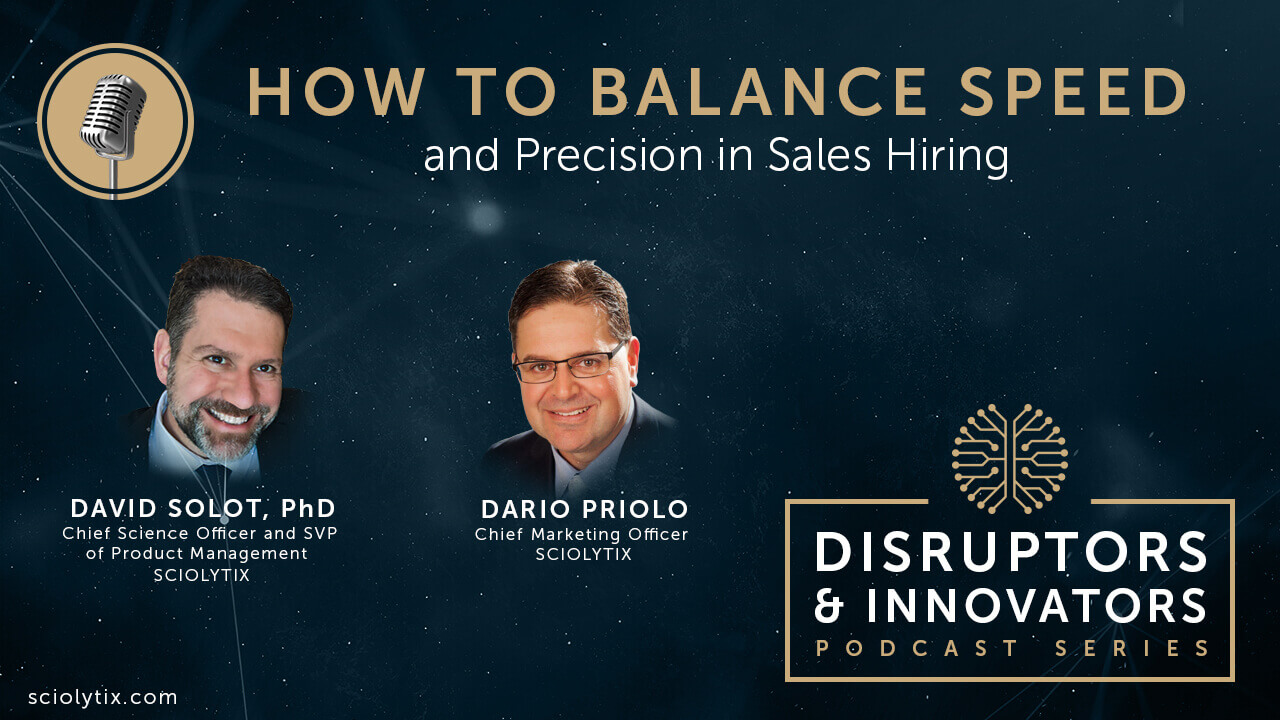
We’re not sure if you’ve noticed, but it’s pretty evident that we are in an employee’s market when it comes to hiring. Gone are the days where organizations can get away with taking their time with the hiring process, interested candidates will do whatever you tell them to do, and people will deal with longer and less efficient hiring processes. This is particularly true in sales hiring, where there are roughly 700,000 sales openings and fewer people who actually want to go into sales.
It’s an interesting dilemma. Organizations globally find themselves combatting things they’ve never had to before.
- Candidates can be choosy — When they’re willing to move, what kind of opportunity are they willing to move for?
- Working remotely — The COVID-19 pandemic showed that many positions could work remotely. Employers can’t expect people to be in the office every day. Candidates like the flexibility, and they know it is a viable option.
- They don’t want the stress — If a job seems too stressful, a potential candidate is willing to trade for it.
What Does This Mean for Sales Hiring?
Speed and precision in sales hiring — or any industry, for that matter — is the name of the game, not only to get people in the door but also to bring in the right people for what you need. Organizations must take a very critical look at their hiring process right now. There’s an old belief that if someone is applying for a job, they’ll do whatever you ask them to do because they need the job. They have a family to feed, or they desperately want to advance in their career. So it was OK to make them take a seemingly endless battery of tests or have them come in for five or six rounds of interviews.
Sorry, but those days are gone. Candidates today are more likely to look at an organization that has an outdated or long hiring process and say, “I don’t want to do this. It’s not worth it. You’re not the right organization for me.”
Furthermore, they add, “I have plenty of opportunities out there.”
Organizations have to be faster. They have to be more efficient. They’re under a lot of pressure to act quickly and to bring someone on board before the candidate gets upset, frustrated, or decides to look somewhere else.
It’s funny because now we hear employers saying:
- “This candidate never got back to me.”
- “Not enough people are applying for our positions.”
Turnabout is fair play, and it’s happening now more than ever. So what is the answer?
Predictive Simulations Are the Answer
In many organizations, you have a long list of applicants that need to go through a round of initial cuts. This can be a very lengthy process depending on how you’re set up. With predictive simulations, we are setting organizations up to have people go through the simulations on their own device and demonstrate that they know how to sell. They do this on their own time, and the organization isn’t investing a ton of time and money on it. But what it does do is provide intelligence on if a particular candidate is good at selling.
- Do they know how to sell?
- Do they do it well?
- Can they demonstrate that they can do it?
- Can this person sell right now, or do they just have the potential to sell?
This naturally speeds up your hiring process because you’re answering all the important questions that you need answers to right off the bat, making you more efficient.
- You measure performance directly by watching someone sell in a simulated environment.
- It’s objective, meaning that it’s the same for every person.
- It reduces bias because you’re only looking at numbers.
- The avatars respond the same way every time.
- It eliminates concerns over salespeople “gaming the system” or “faking it” to look better.
- Performance in the simulation is tied directly to real-world KPIs.
If you’d like to learn more, please listen to our Disruptors & Innovators podcast. We are revolutionizing the way organizations hire, onboard, and develop talent. Predictive simulations are the latest enhancement we’re adding to that arsenal of products. And we guarantee you won’t be disappointed.